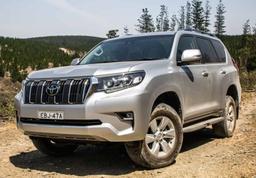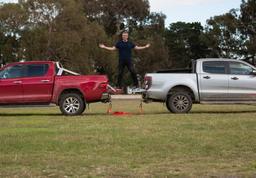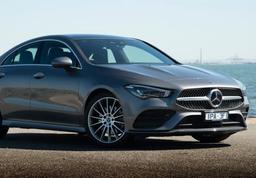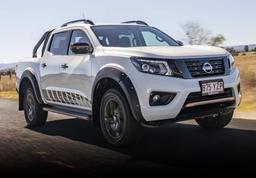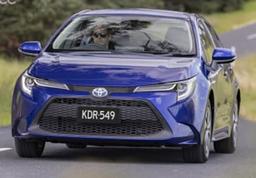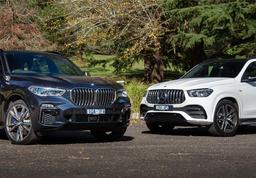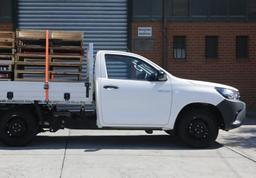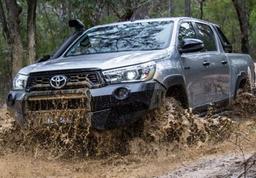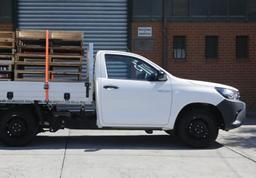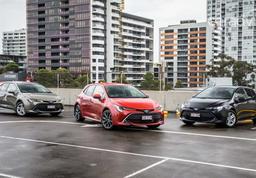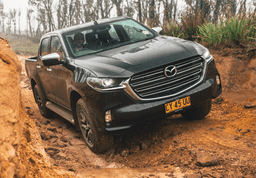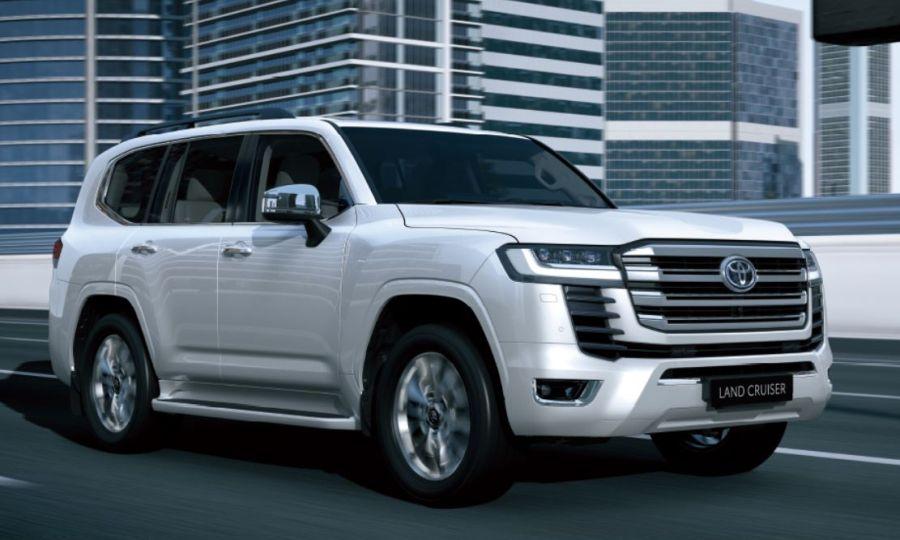
Is Toyota's 4x4 king of the hill finally over the hill? We take a top-spec Sahara to find out.

It’s easy to write off the 2020 Toyota LandCruiser 200 as being overpriced and old. But, it’s also enduringly popular with Australian buyers.
Overpriced, especially when you’ve got this specification – $123,590 worth of 2020 Toyota LandCruiser Sahara – in your healthily budgeted crosshairs. My anecdotal fact of the day: the number of Sahara badges I see cruising around town suggests that this big-dollar specification is a popular choice with Australian buyers.
The entire LandCruiser 200 range is still selling well, in fact. The monthly industry reporting tool VFACTS indicates that the only segment competitor is Nissan’s Patrol, which gets outsold at more than five-to-one. The Land Rover Discovery, a one-time competitor (officially grouped with prestige upper large SUVs), gets outsold by this much older LandCruiser almost 16 to one.
Direct VFACTS numbers aren’t deadly accurate, lumping in 76, 78 and 200 Series LandCruisers together as 'wagons', although they are all very different vehicles. Out of the 13,804 LandCruiser wagons sold in 2019, 12,619 were 200 Series. That leaves 1,185 76 and 78 Series.
Don’t forget: there is a new LandCruiser coming. Considering the 80 Series ran from 1990 to 1998, and the 100 Series LandCruiser ran from 1998 until 2007, the long-serving 200 Series LandCruiser, which has been gracing showroom floors for 13 years now (with updates along the way) is definitely due for replacement.
Details are scant at the moment, which is typical of Toyota. However, some reports do indicate the 200 Series might be the beginning and end of the twin-turbo diesel V8.
Unlike some of the competition, the Ranger doesn’t get a reduction in peak torque when you opt for the manual transmission. That’s a good thing, leaving this Ranger feeling perky and willing off the mark, and matching the gearbox nicely with its torque delivery. The gearshift can feel a little notchy, as most heavier-duty gearboxes are, but once you get the feel for it, it’s easy to row through the gears.

Big-budget LandCruiser buyers will also need to look at the limited-edition LandCruiser Sahara Horizon, and will probably want to run their ruler over the Prado Kakadu while they are in the showroom. Also, don’t forget the closely related Lexus LX450d ($135,171 before on-road costs).
Beyond there, Nissan’s Patrol Ti-L offers conspicuously more bang for buck, and Ram’s 1500 Laramie also competes closely in many aspects.
As expensive as it is, the LandCruiser is also kind of unique. Along with room for seven aboard the 4990mm of length, the twin-turbo 4.5-litre diesel V8 is only matched and/or beaten in terms of displacement and torque by high-end Range Rovers and American full-size trucks.
In terms of power, 200kW at 3600rpm is solid if a little paltry for the capacity, but 650Nm at 1600–2600rpm is where the party’s at. This torque gives the engine a relaxed and muscular feeling to drive. While it’s not fast, it’s never perturbed by hills or heavy loads. Typically, driving sees the engine live in that peak torque range, only reaching up into the 3000rpm zone when you’ve planted plenty of throttle.
The engine is mostly smooth and muted, with a bit of a whooshing rumble under acceleration. You can tell there is some significant sound deadening installed to keep things quiet. Unlike prestige competitors that climb in output as they climb in price, this driveline is shared right across the range, from GX ($80,190) to Horizon ($129,090).
Claimed fuel economy for the 200 Series LandCruiser is 9.5 litres per 100km, but in our testing the figure was much closer to the urban figure (11.2L/100km). Our testing included plenty of highway and town driving, along with a bit of off-roading.
With a 138L fuel tank, you should be able to comfortably maintain well over 1000km between refills.
Although once the gold standard, a six-speed automatic gearbox feels a bit underdone in a world where seven and eight ratios are the norm. Although, with plentiful torque on tap, the LandCruiser never feels like it needs more ratios. The gearbox (An Aisin AB60F) works well with the diesel V8, both on-road and off-road.
Sahara specification doesn’t hold back on interior fit-out. While it’s certainly a bit dowdy these days, the 200 Series really turns it on with bells and whistles. Recent updates have improved the standard kit in GXL and VX variants, which means this Sahara is slightly less of a specification standout in the range.

Interior bits shared with the VX include: a 9.0-inch infotainment display (although with no Apple CarPlay or Android Auto), 4.2-inch multifunction display in front of the driver, leather seat accents with electric adjustment, 360-degree camera (including a multi-terrain monitor), 18-inch alloy wheels, auto wipers, sunroof, side steps and wood-look interior highlights.
Unique goodies in the Sahara include rear-seat entertainment screens, powered tailgate, refrigerated centre console, heated first and second rows, ventilated front seats, active headrests, electric steering column, memory seating position, and even more wood-look bits.
I found out the hard way: if you want to fire up the Playstation 4 in your LandCruiser, you’ll need a more powerful inverter. The 100W unit in the boot doesn’t offer enough grunt unfortunately. Something less power-hungry would work, letting you use the HDMI port for some extra versatility over DVDs.
Although dated in its look and feel, the LandCruiser’s interior is undoubtedly comfortable and practical. Storage options are good around the cabin, and the sheer size helps its credentials as a family bus. First and second rows are capacious and comfy, while the third is only decent. Taller adults will struggle, as they will in most third rows.
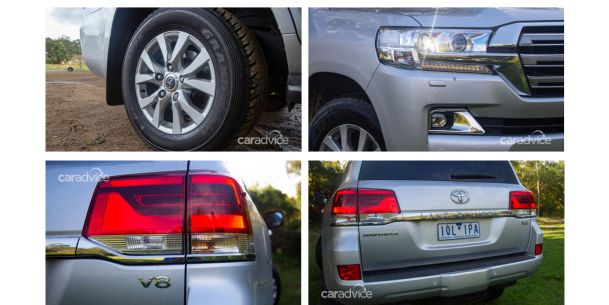
And that has to be remembered with this LandCruiser. While a similar spend can land you all manner of fancy large SUV machinery from Europe and Japan, the LandCruiser does some things better than most: raw size and space, good comfort, and genuine ability in terms of off-roading and towing.
With room for five, the LandCruiser 200 offers 1,276 litres of raw storage space, which is quite huge, especially when you remember the 3rd row doesn't fold into the floor, and is always taking up space. With the 3rd row deployed, Toyota doesn't quote litres of capacity. But, I can tell you there is still usable space there. Think enough for a half trolley load of groceries, or similar to the boot in a small car.
The LandCruiser has always embodied the pinnacle for Toyota in terms of capability and durability. So, while Toyota might have thrown the engineering kitchen sink at the project back before it launched in 2007, a lot has happened in those 13 years. However, time and progress seem to plod along at a slower pace in 4WD land, and the LandCruiser still packs a decent technological punch.
Off-road and in low-range, the LandCruiser is still a formidable unit. A smart and well-tuned off-road traction-control system, combined with the Kinetic Dynamic Suspension System (hydraulic, active swaybars), gives lots of control and articulation. Ground clearance is only average, and (typical of many standard 4WDs) the side steps can get knocked about off-road. However, despite its heft, the LandCruiser feels surprisingly capable off-road.
There’s no locking rear differential, instead the LandCruiser relies on the ‘A-TRAC’ off-road traction control, which can be switched through a few different modes in Multi-Terrain Select. And while a locking rear diff is never a bad thing, the LandCruiser manages to control wheel spin deftly without one. Crawl Control is also a handy feature for novice off-roaders, but is quite noisy and jerky in operation. For that reason, I steer clear of it.
Although the LandCruiser's turning circle is decent at 11.8m, a feature called Turn Assist (which only works in low-range) brakes your rear inside wheel to help the LandCruiser be a little more manoeuvrable. It works, but does rip up mud and soft ground a little.

Towing is another strong point of the LandCruiser, and a reason why it’s so popular among Australian grey nomads. It’s big, fairly heavy and torquey. The small payload and GCM need to be remembered, however, and the Australian 4WD industry has made good money on GVM-upgrading many LandCruisers bound for heavy loads and lots of accessories.
With a hefty kerb weight of 2740kg, the 3350kg GVM ceiling leaves only 610kg of payload. That’s enough for general usage, but you will run into problems when you throw on a bullbar, winch, and other typical accessories. A commonly fitted rear bar, which frees up space for a second spare wheel and long-range tank, works out to be an especially heavy modification.
If you’re planning on such things, you’d be mad not to include a GVM upgrade as part of your pre-delivery. Most reputable 4WD stores are able to do this with nationwide accreditation, and varying upgrades and replaced components. Like anything, do your research before taking the plunge.
With a 3500kg braked towing capacity and 6850kg gross combination mass, a fully loaded LandCruiser can still tow the full amount, and vice versa. This is a big improvement over most 4x4 utes, whose smaller GCM figures rob Peter to pay Paul. It’s also better than a Nissan Patrol on paper, which stipulates a payload penalty, depending on how much towball mass you have.

There’s new tow-rig competition for the LandCruiser, which means it doesn’t have the same monopoly it once did. In particular, the Ram 1500 (and even 2500) gives some variety in choice, and Nissan’s not-so-thirsty 5.6-litre Patrol is making headway converting Australians back into petrol 4WDs.
Safety credentials for the LandCruiser are strong thanks to some judicious updates over the years. The five-star ANCAP safety rating comes from way back in 2011, when testing was less stringent than today. However, gear like rear cross-traffic alert, blind-spot monitoring and adaptive cruise control are nice to have. There is no autonomous emergency braking on the LandCruiser 200. Instead, it's a kind of forward-collision warning that Toyota calls 'Toyota Safety Sense' and includes pedestrian detection.
In terms of warranty coverage, you've got five years and unlimited kilometres with the LandCruiser 200.
Because the LandCruiser has service intervals every six months or 10,000km, it works out to be a bit expensive. For the first three years (or up to 60,000km) it's $300 per visit, or $1800 to the three-year mark. From there it goes up, totalling $4409 over five years. If you're interested in bean-counting, each service (seventh to 10th) is listed at $796.52, $823.60, $504.41 and $484.19 respectively.
No doubt, the LandCruiser remains a kind of aspirational vehicle in Australia because of the reputation for reliability. This diesel V8 isn’t without its issues over the years, however, and perhaps isn’t as outright reliable as old six-cylinder mechanical engines. It’s a hard thing to say with certainty, though, as all evidence is anecdotal. If I were to buy a new LandCruiser (or any new diesel 4WD, to be honest), I’d be spending some additional money on filtering my fuel and crankcase ventilation.

While it's not the latest and greatest by a long shot, you can see the enduring appeal of the LandCruiser in Australia. And, you can see how that translates into strong sales. Much of it centres around that twin-turbo diesel V8, which is both charming and effective. Combine that with lots of space, ample comfort and good off-road chops, and you've got a package that's ready for just about anything.


This article has been republished with approval from its original source and author at caradvice.com.au.
Let us help you upgrade and get driving sooner
Ready to trade in your current car and upgrade to something new? Either way, we're here to help.
We’ve redefined the car buying process to make it simple, stress and haggle free. We'll find you a great deal from our Australia wide dealer network to ensure you get a competitive price.
Call 1300 880 008 to chat with us and learn more about what we can do for you or get the new car buying process started today.




